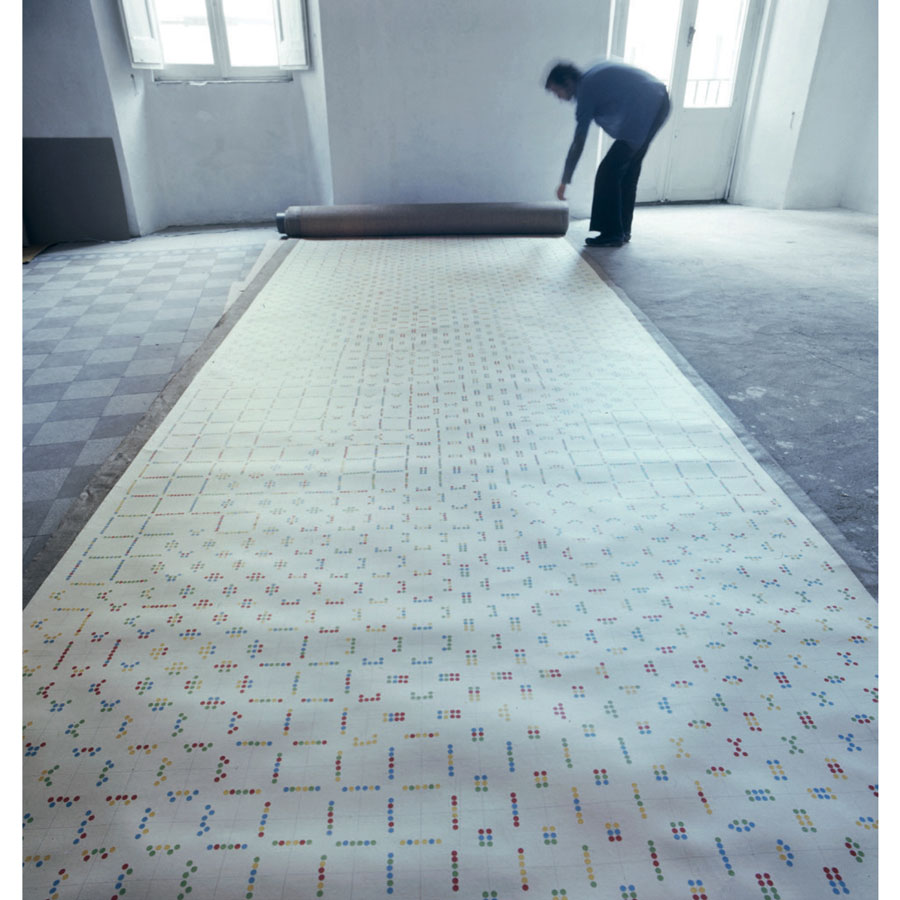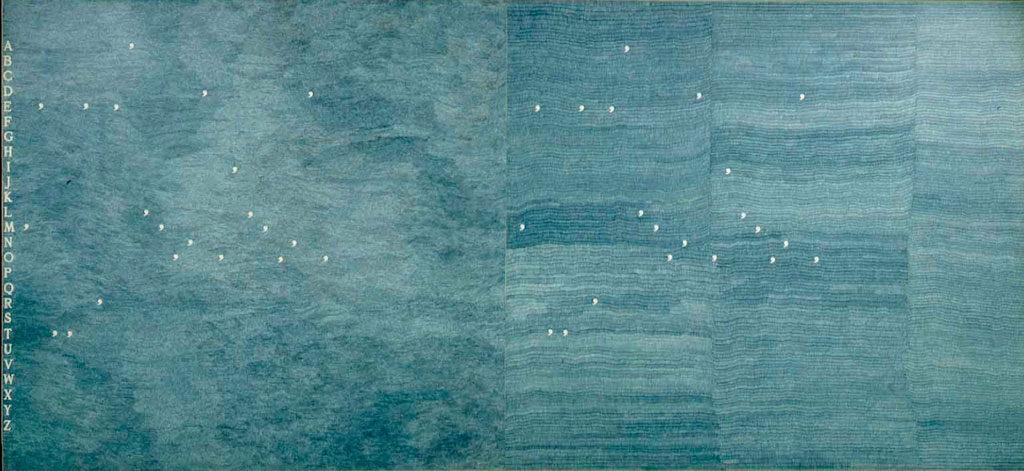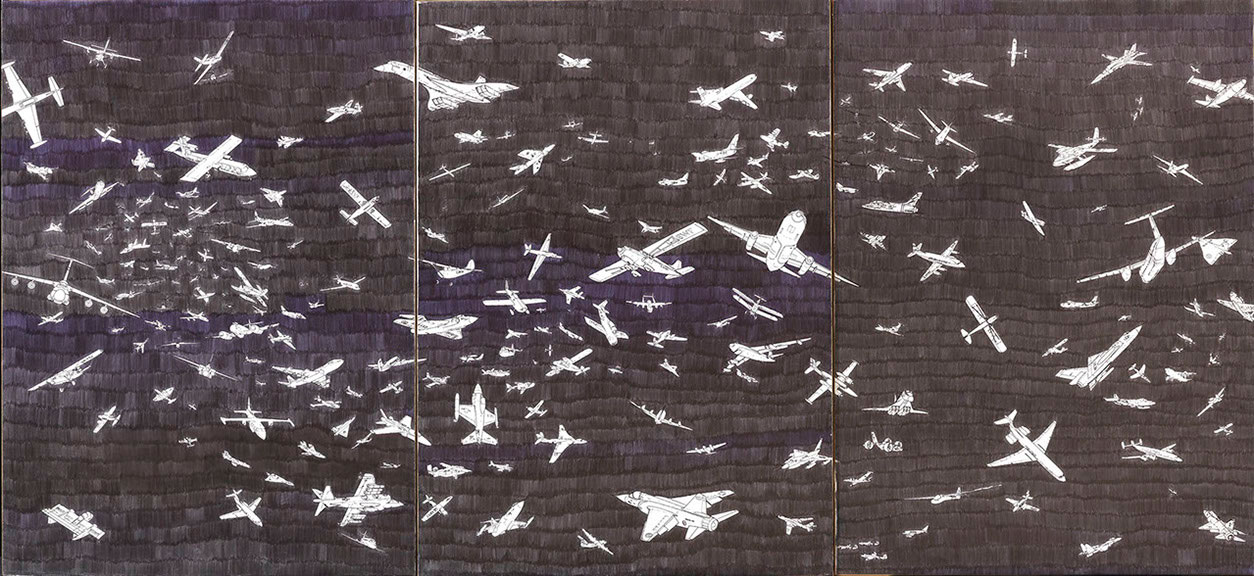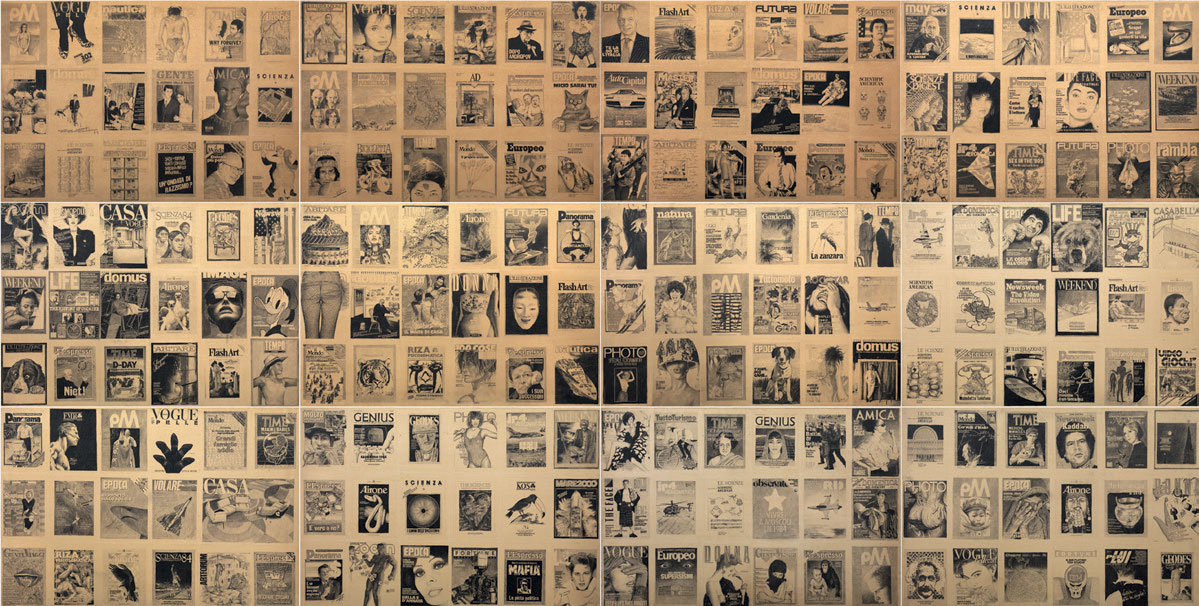ART CITIES:London-Alighiero e Boetti
 Alighiero Boetti or Alighiero e Boetti as he liked to sign his works from began his career as a self-taught artist, after having briefly studied Business and Economics at the University of Turin. In 1967, the Christian Stein gallery in Turin offered Boetti his first solo show, within a context marked by the recent birth of Arte Povera. The young artist was subsequently invited to take part in all group exhibitions around this theme, that paved the way for total freedom of artistic expression, and in shows on Conceptual Art such as “When Attitudes Become Form” at the Kunsthalle Basel in 1969. The latter marked Boetti’s detachment from Arte Povera in favour of conceptual experimentation through duplication, symmetry and multiplication.
Alighiero Boetti or Alighiero e Boetti as he liked to sign his works from began his career as a self-taught artist, after having briefly studied Business and Economics at the University of Turin. In 1967, the Christian Stein gallery in Turin offered Boetti his first solo show, within a context marked by the recent birth of Arte Povera. The young artist was subsequently invited to take part in all group exhibitions around this theme, that paved the way for total freedom of artistic expression, and in shows on Conceptual Art such as “When Attitudes Become Form” at the Kunsthalle Basel in 1969. The latter marked Boetti’s detachment from Arte Povera in favour of conceptual experimentation through duplication, symmetry and multiplication.
By Dimitris Lempesis
Photo: Tornabuoni Art London Archive
Paper is the constant thread that ties much of Boetti’s work together, from his sketches to his museum-quality pieces. The exhibition “Alighiero Boetti Decoding His Universe: Works on Paper (1968-91)” presents over 30 works on paper by the artist that span his entire career and range in scale from origami airplanes to monumental murals. These works are rarely seen in such quantity and depth, so this show provides a unique opportunity to delve into the mind of the artist whose work is so intensely cerebral. The exhibition includes some of his first conceptual works, such as the “Bollini” series from the late 1960s. After his daughter was born in 1972, Boetti began inventing numerical and word-based games to play with her, that were eventually developed into fully-fledged series of now iconic works. These include the “Ricami” works, the letter-embroideries which, when read from top to bottom and left to right, reveal poetic and sometimes playful phrases and the “Biro” works, which invite the reader to match commas with letters to decipher hidden messages in a vast sea of ink drawn from ball point pens. The monumental biro piece “Mettere al mondo il mondo” (1975) is a prime example of this practice. Just as his work ranges from the monumental to the minute, the cyphers with which we can decode his art vary from the complex algebraic equation behind his “Storia Naturale della Moltiplicazione” (1974-75), to the fact that Boetti used to take polaroids and organise his infant daughter’s animal stencils by species before using them to create the works “Fregio” that were shown at the Venice Biennale of 1990. In his “Copertine” works on paper, which were mounted onto canvas, the rule was simple: to visually summarise the passing of an entire year by selecting and then tracing over 12 magazine covers of the time, one for each month. His “Lavori Postali” consisted of empty envelopes, stamped using a finite and predetermined combination of colorful postage stamps, sent across the world to made-up addresses, or to long-dead recipients. Only if all the envelopes were successfully returned to the sender could Boetti complete the game, and therefore the work. His works then focused on codes of classification and communication, working with numbers, maps and alphabets, playing with a variety of materials and techniques, reminiscent of ancient Asian craftsmanship.
Info: Tornabuoni Art London, 46 Albemarle Street, London, Duration 1/10-10-8/1/20, Days & Hours: Mon-Fri 10:00-18:00, Sat 10:30-17:30, www.tornabuoniart.com



